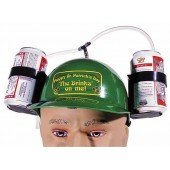bjtc_brian
Member
Brian;
Not arguing your point, but I think it needs to go a little deeper than that. If outfitters.....or anyone else for that matter weren't out hunting at all the last two weeks of season it would help immensely. Montana will have a hard time with that though as everything revolves around the almighty dollar. Maybe allowing doe hunts the last two weeks on a limited basis and in certain areas, but shutting off the buck hunting might work. Just a thought.
I don't necessarily disagree with this from the point of "bigger" bucks. Just limiting people from hunting within 500 yards of a road would limit this!!! LOL! If you are going to limit this, why not limit hunting elk during the rut...not quite as popular either.
Better yet, how about limit the number of outfitters. A good start would be taking the current number and getting rid of 50% of them.
I personally don't think you would even have to go that far. I think if you limited outfitters to having to hunt public lands that same as the "public", 50% of them would go out of business due to laziness. I think it is complete and utter BS that someone can lease a 10 acre piece of private to give them miles on miles of driving!
Albeit, I am pretty bitter, even a month later, that someone can completely RUIN 15-20 sqaure miles in less than one season just by driving his damn UTV all over the place! In 4 years prior, we had never seen a hunter get off his butt and walk into where we had found. And we had never not see at least one quality buck in the area, until this year. Funniest thing of all was that the outfitter claimed on his web site that he was all for "managing" the game...TOTAL BS!!!!








